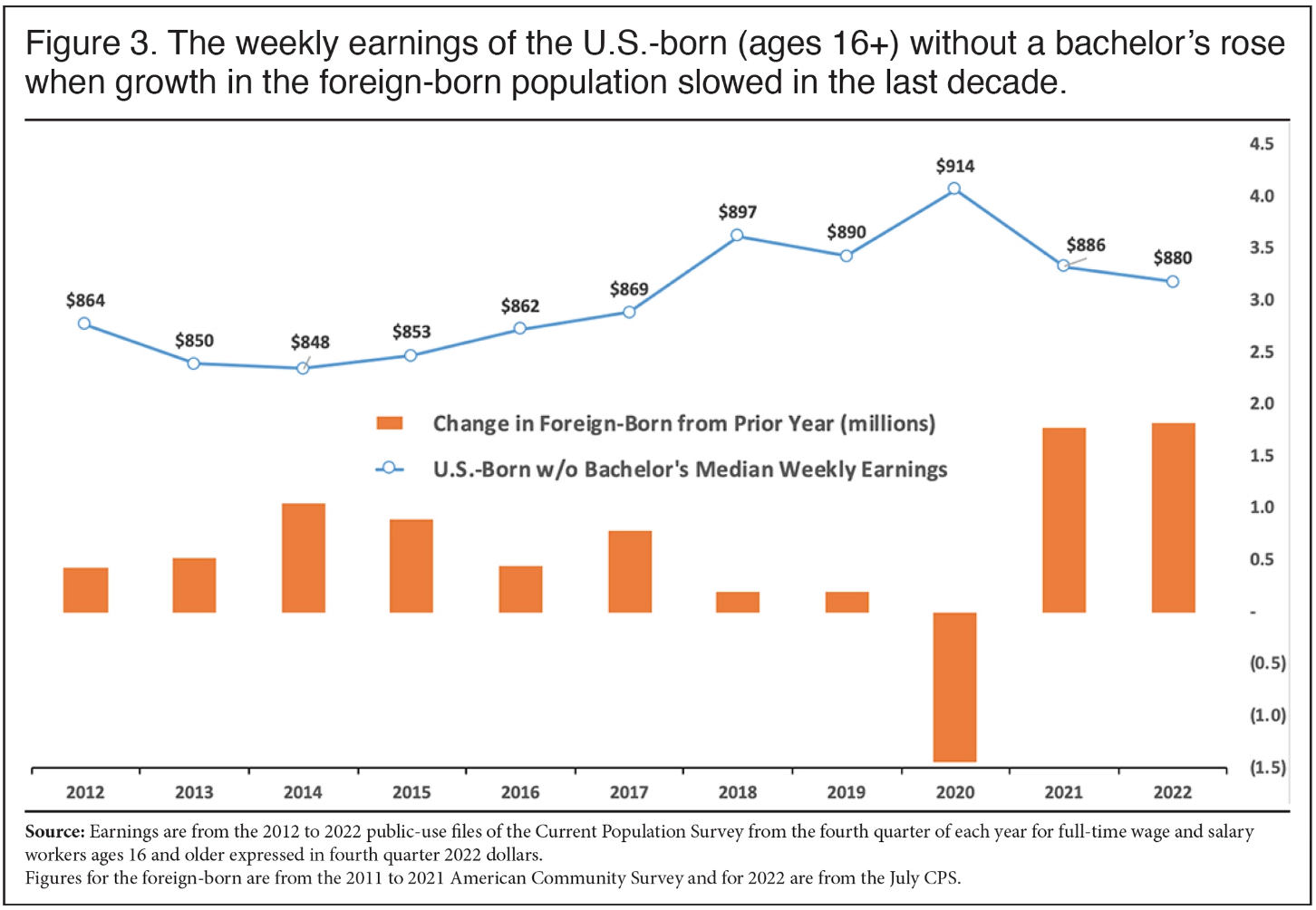The number of foreign nationals holding jobs in the United States has hit the highest level since the Labor Department began tracking the data in 1996 as the employment of native-born Americans declines, a trend under President Joe Biden.
In 2022, foreign-born workers saw their share of the labor market hit the highest level in almost 30 years at more than 18 percent, with close to 30 million now holding U.S. jobs, according to data published in the Wall Street Journal.
The number of foreign-born workers holding jobs or looking for work increased by 1.8 million last year — more than the 1.3 million native-born Americans who joined the workforce.
“Any real gains we’re seeing in the labor force are coming from immigrants — they’re a buoy,” an economist told the Journal. said Elizabeth Crofoot, senior economist at Lightcast, a labor-market data firm.
With its insistence on expanding overall immigration to the U.S., through legal immigration, illegal immigration, and foreign visa worker programs, the Biden administration has increased the foreign-born workforce by five percent over just four years.
RELATED: DHS Chief Mayorkas Refuses to Recognize Cost of Illegal Immigration to American Citizens
CBS NewsOver the same period, the number of native-born Americans in the workforce has declined by 0.5 percent. Likewise, unemployment for foreign-born workers was lower last year, at 3.4 percent, than the unemployment rate for native-born Americans, at 3.7 percent.
Recent research by the Center for Immigration Studies (CIS) shows that mass unskilled immigration to the U.S. keeps wages lagging for non-college-educated Americans while lowering overall immigration, legal and illegal, boosts wages at a higher rate for these Americans.CIS researchers reveal:
Between the fourth quarters of 2016 and 2019, real weekly earnings for full-time, U.S.-born workers without a bachelor’s grew 3.2 percent. During this time, growth in the total immigrant population (legal and illegal) averaged about 400,000 a year, compared to about 730,000 a year from 2012 to 2016, when earnings actually fell slightly for the less-educated U.S.-born.
The rise in earnings and labor force participation, particularly for the less-educated, along with low inflation and the overall good economic conditions from 2016 to 2019 runs counter to the often-made argument that the U.S. economy requires very high levels of immigration to prosper.
[Emphasis added]…
Real weekly earnings for virtually all workers, immigrant and U.S.-born, declined from 2020 to 2022. This almost certainly reflects the very high inflation in this time period, though this decline in earnings coincides with a dramatic rebound in the immigrant population, which increased 1.8 million in a single year, 2021 to 2022. [Emphasis added]
The Biden administration has been honest about its policy of driving up overall immigration to the U.S. for the benefit of corporate special interests regardless of the impact on Americans’ wages and job prospects.
Weeks ago, for instance, Department of Homeland Security (DHS) Security Alejandro Mayorkas detailed his globalist worldview, wherein the U.S. acts as an economy for which foreign workers can flood the labor market against the interests of Americans.
“There are businesses around this country that are desperate for workers, there are … desperate workers in foreign countries that are looking for jobs in the United States, where they can earn money lawfully and send much-needed remittances back home,” Mayorkas said.
“‘What is the cost of a broken immigration system?’ That is the question I am asked and that is the question that I pose to Congress, because it is extraordinary,” he continued.
John Binder is a reporter for Breitbart News. Email him at jbinder@breitbart.com. Follow him on Twitter here.


COMMENTS
Please let us know if you're having issues with commenting.